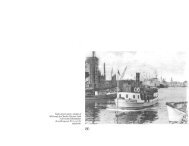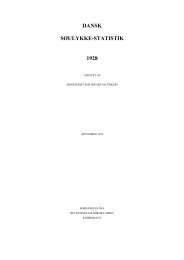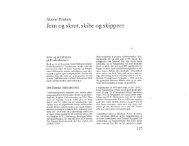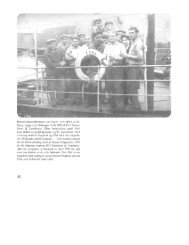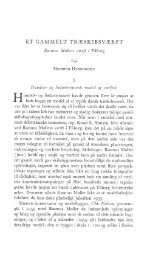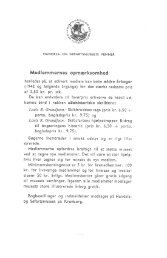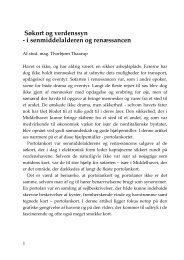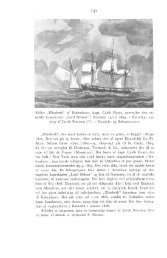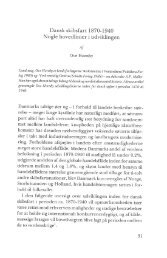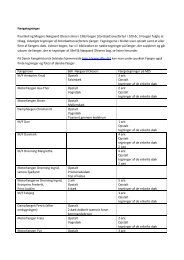Henning Henningsen: Rejs ud til Vagt! - Handels- og Søfartsmuseet
Henning Henningsen: Rejs ud til Vagt! - Handels- og Søfartsmuseet
Henning Henningsen: Rejs ud til Vagt! - Handels- og Søfartsmuseet
You also want an ePaper? Increase the reach of your titles
YUMPU automatically turns print PDFs into web optimized ePapers that Google loves.
gives for the first time the names of some of the watches and a description of the<br />
ceremonies used when posting the night-watch.<br />
The various pieces of evidence about the watch on board which we have found up<br />
un<strong>til</strong> approximately 1550 are presented in chronol<strong>og</strong>ical order in the table in the<br />
Danish text (O = warship, H = merchant or expedition ship). Compared to the<br />
amount of intensively st<strong>ud</strong>ied source material there may not be very many references<br />
offering concrete proof, but presumably there are enough to give a pretty clear idea of<br />
where and when the system might have arisen. The list gives an unequivocal answer:<br />
it must have happened in the English Navy, probably towards the end ofthe 13th<br />
century. It cannot be pure coincidence that precisely in the 50-year period starting in<br />
1295 a whole series of examples from England mention the presence on board ofthe<br />
hourglass, even though we must allow for a more copious publication of English<br />
source material than that of other nations. Naturally we do not go so far as to claim<br />
that the well-known English King Edward I (1272-1307), who among other things<br />
reorganized England's national sea defence, had anything to do with it. But certainly<br />
we may presume that the creator ofthe system must have been a brilliant Organizer<br />
who had a strong state behind him and who could see the possibilities which there<br />
were in the system. However, this is s<strong>til</strong>l just a theory. And whether or not everything<br />
really went as smoothly as presented here also remains an open question, since we<br />
know nothing whatsoever about the sequence of events. It is possible, as we have<br />
implied, that the night-watch in the beginning was the primary watch, while the day<br />
watch was first introduced later. It would be highly desirable if more sources could<br />
be traced shedding light on this problem.<br />
Once the system had been invented it spread to other countries, especially to the<br />
navies, and later to the big merchant and company vessels as well. In France it<br />
appears that the system was introduced in the 1370's and in the German Hanseatic<br />
ships certainly before 1400. On Spanish ships we have documented its use around<br />
1436. Strangely enough, our sources say nothing about such out-and-out seafaring<br />
nations as Portugal and the Netherlands, but this must be pure chance because the<br />
system was almost certainly in use here at the same time. In Denmark the system was<br />
definitely known at the beginning ofthe 16th century, if not before.<br />
A watch-system was also known on large Muhammadan ships, in the 17th century<br />
at least. They did not, however, use the ship's bell, which they regarded as a Chris<br />
tian symbol, but instead indicated time by drumbeat.<br />
Travellers' descriptions ofthe ships of various countries where no watch-system<br />
was known, e.g. Chinese junks and Arabic dhows, show how haphazardly the work<br />
was carried out on board these ships and how slack discipline was. The watch-system<br />
has without a doubt been one of the most important factors contributing to the<br />
impressive expansion of shipping over the Seven Seas through the centuries.<br />
113



